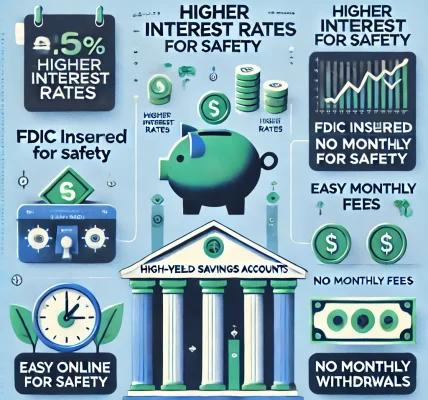Achieving financial independence is a goal that many aspire to, but few know where to start. The idea of having enough wealth to live comfortably without relying on a paycheck is a powerful motivator. However, the journey to financial independence requires careful planning, discipline, and, most importantly, an effective saving strategy.
In this guide, we’ll walk you through how to plan your savings in a way that leads to financial independence. From setting clear financial goals to making smart investment choices, these steps will put you on the path toward a future of financial freedom.
What Is Financial Independence?
Before diving into how to plan your savings, it’s important to understand what financial independence really means. Simply put, financial independence means having enough income from your investments, savings, or other sources of passive income to cover your living expenses without having to work actively.
This can be achieved by accumulating wealth through disciplined saving, investing wisely, and building multiple income streams over time.
Steps to Plan Your Savings for Financial Independence
1. Set Clear Financial Goals
The first step in planning for financial independence is to set clear, measurable goals. Ask yourself questions like:
- What does financial independence look like for me?
- How much money do I need to live comfortably?
- At what age do I want to achieve financial independence?
Once you have your goals in mind, break them down into smaller, actionable steps. For example, if your goal is to accumulate $1 million by the time you’re 50, figure out how much you need to save and invest each year to reach that amount.
Tip: Use a financial goal tracker or an online calculator to estimate how much you need to save monthly or annually to meet your target.
2. Create a Budget and Track Your Spending
A solid budget is the foundation of any savings plan. The better you can track your income and expenses, the more effectively you can allocate funds toward your savings goals.
Here’s how to create a budget that will help you achieve financial independence:
- Track your monthly expenses: Identify your fixed and variable expenses (e.g., rent, utilities, groceries, entertainment).
- Prioritize your savings: Treat savings as a fixed expense. Aim to save a significant portion of your income (typically 20% to 30%).
- Reduce unnecessary spending: Cut back on non-essential expenses, like dining out, subscriptions, or impulse shopping, to increase your savings rate.
3. Build an Emergency Fund
Before you dive into investment plans, it’s crucial to have an emergency fund. This fund will act as a financial cushion for unexpected situations such as job loss, medical emergencies, or urgent repairs. Typically, an emergency fund should cover at least 3 to 6 months’ worth of living expenses.
Having an emergency fund will give you peace of mind, knowing that you can handle financial emergencies without dipping into your investments.
Tip: Keep your emergency fund in a high-interest savings account or a liquid fund, so it earns some return while remaining easily accessible.
4. Maximize Your Income
To achieve financial independence faster, it’s important to maximize your income. You can do this by:
- Negotiating a raise: If possible, ask for a salary increase at work.
- Side hustle: Consider taking up a part-time job or freelancing to supplement your income.
- Invest in skills: The more you can improve your professional skills, the higher the chances of getting promoted or landing higher-paying jobs.
Having multiple sources of income accelerates your savings, allowing you to invest more and grow your wealth faster.
5. Invest Wisely for Long-Term Growth
Investing is key to growing your wealth and achieving financial independence. Simply saving money in a bank account won’t get you very far due to inflation and low interest rates. To achieve financial independence, you need to invest your money in assets that generate passive income and appreciate over time.
Here are some popular investment options to consider:
- Stock Market (Equity Investments): Investing in stocks offers the potential for high returns, but it also comes with higher risk. If you are young and can afford to take risks, investing in individual stocks or mutual funds can provide significant growth.
- Real Estate: Real estate can be a good long-term investment if done correctly. Rental properties or commercial real estate can generate steady cash flow and appreciate in value over time.
- Retirement Accounts: Contributing to a 401(k), IRA, or other retirement accounts ensures that you are saving for your future in a tax-advantaged manner.
- Bonds: For a more conservative investment, bonds provide steady income with lower risk compared to stocks.
Tip: Consider diversifying your portfolio to spread out risk and increase the chances of consistent returns.
6. Automate Your Savings and Investments
One of the best ways to stay consistent with your savings plan is to automate your savings and investments. Set up automatic transfers from your checking account to your savings account or investment portfolio each month. This ensures that you’re saving first and spending later.
You can set up:
- Automatic contributions to your 401(k) or IRA.
- Recurring investments in mutual funds or stocks via SIPs (Systematic Investment Plans).
- Scheduled savings for your emergency fund or specific goals.
Tip: Automating your savings ensures that you stay disciplined and avoid the temptation to spend the money elsewhere.
7. Review and Adjust Your Plan Regularly
As your life changes, so should your financial plan. Whether you get a promotion, face unexpected expenses, or hit a financial milestone, it’s important to review your plan regularly and make adjustments as needed. This includes:
- Revisiting your investment strategy.
- Adjusting your budget based on income changes.
- Refining your financial goals as you get closer to achieving them.
Conclusion
Planning your savings to achieve financial independence is a marathon, not a sprint. By setting clear goals, creating a realistic budget, building an emergency fund, maximizing your income, investing wisely, and automating your savings, you can achieve the financial freedom you desire. The earlier you start, the faster you can reach your goals.




